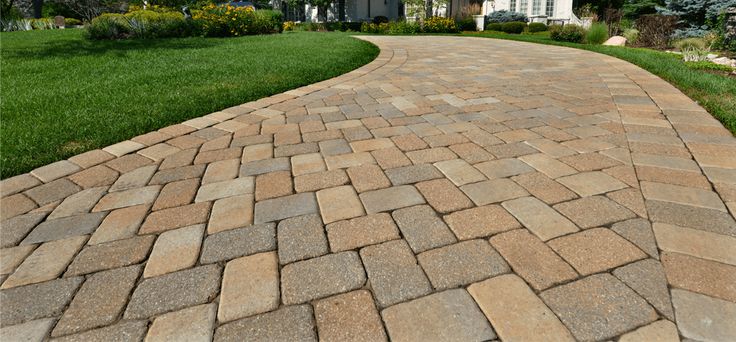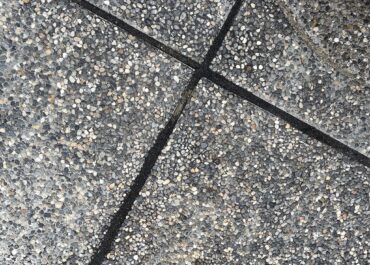
Who hasn’t dreamed of owning a beautiful paver patio or driveway? The combination of aesthetic and functionality makes pavers one of the most sought after elements in the hardscape industry. But how to acquire pavers? How long does it take to pave a driveway?
For all its popularity, the fact that we often hear those questions shows how much the applications of pavers are still a mystery to many homeowners. So the objective of this article is to talk about all the things you need to know before deciding to go for pavers, including how long does it take to install them.
The planning phase is, arguably, the most important phase of any paver installation. Taking your time to choose the right type of paver for your project and planning your installation schedule are crucial steps. The amount of time invested during that phase is what separates successful from failed installations.
So let’s get right to it.
How Long Does it Take to Pave a Driveway? Before and After
Installing pavers consists of much more than simply placing them on the ground. Things are much more complex than that.
For starters, you’ll have to make a lot of digging to install pavers. The bigger the driveway, the more you’ll have to dig. So how long does it take to pave a driveway is directly related to the size of said driveway.
Also, placing the pavers themselves is merely a step in the installation. Following that, you’ll still have to add the polymeric sand on your installation. And then there’s yet another stop, the sealing of the pavers. Only after the sealer is dry, the installation is considered to be finally over.
So to answer the “how long does it take to pave a driveway?” we must make two separations.
If we’re talking exclusively about digging, bedding, placing pavers and add polymeric sand, the entire process can be made within a day.
If we count the sealing, however, the full installation may last a full week.
Choosing the Right Paver
There are tons of available options for pavers in the market. Each of these options has its particular strengths and weaknesses, and serve better to one purpose or another.
Choosing correctly from amongst those options is your first step, and one of the most important ones.
So know very well yours setting. Where is your installation going to be? What is its purpose? Where are you willing to concede, and what are yours “musts” when it comes to your paver of choice?
Knowing all that can be hard, especially for people who have never worked with pavers before. That is why it is so important to get in contact with qualified professionals to help you make the best possible choice of material.
Concrete pavers, for example, have been a staple of the industry for decades now. They are extremely reliable and can work with almost any imaginable scenario. They come in a great variation of colors and textures, sure to fit your project from an aesthetic point of view.
For a more modern approach, porcelain pavers are your paver of choice. They have pristine aesthetic quality, able to simulate virtually any other type of paver imaginable. All that with the exquisite advantage of not requiring sealing. This article tells you all you need to know about porcelain pavers.
If you’re planning a small driveway with a more classical look, maybe you can incorporate bricks in your design. Although not the best choice for a driveway, due to not being so resistant as other options, bricks can be a good choice is some scenarios.
And you still have all the natural stone options available, which are a separate universe on itself. On it, you can find some of the most luxury options of pavers available. Travertine pavers, for example, which are absolutely the best choice for poolside installations.
Schedule of Your Installation
Once your pavers are chosen, now it is time to decide when you’re going to perform the installation itself. And the first order of business is to check the forecast for, at least, three consecutive days without rain.
The entire installation can be done within a day or two. From digging, bedding, placing pavers and spreading polymeric sand. However, for the installation to go as optimally as possible, everything must be as dry as possible. In there lies the importance of a few days without rain.
After the installation of the pavers, you’ll still most likely need to seal them. And that’s what takes most time of the project, even though it is a “waiting” time.
After the installation is done, you must wait at least 24 hours before sealing it. This is due to the fact that to activate the polymeric sand, you will need to mist your entire installation with water. But to seal, the pavers must be completely dry, and that’s why you have to wait.
Even after the sealing, the recommended practice is that you leave your pavers curing for at least three days before actually start using it. And only after those three days the installation will be considered done.
For more installation on the steps of the installation itself, check out this article. We focus on porcelain pavers, but it applies to all pavers in general.

How Long Does it Take to Pave a Driveway: Asking a Professional
So, to summarize, a complete installation takes around 5 days to be performed. But if we don’t account for the waiting period in sealing, everything can be done in a single day.
Installing pavers can be fun from a DIY perspective, as long as the project is not too ambitious. Still, we always recommend you hire professionals in your area to help you with your installation.
We here at Eagle Pavers have been working for 14 with paver installation and maintenance, so we know the importance of a quality installation. Hiring a professional can save you huge headaches in the future.
And if you are around the Sarasota and Manatee counties, in FL, why not give us a call to help you?
You can contact us right now at +1 941-210-4192 or email us at sales@eaglepavers.us. We would be happy to hear from you and help you with your porcelain paver project.




